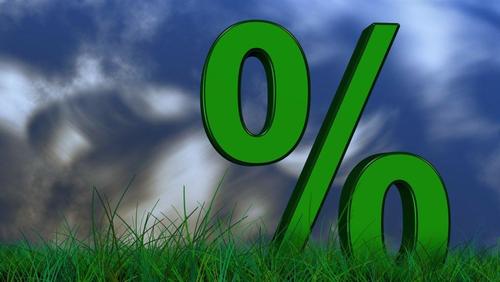The World Is Awash In Negative-Yielding Debt
Authored by Michael Maharrey via SchiffGold.com,
So far, the US has escaped negative interest rates as a matter of central bank policy. Back in May, many thought a Fed move to negative rates was a real possibility. Of course, much of the world has operated under negative rates as a matter of policy for years. The European Central Bank (ECB) launched negative rates in June 2014. The Bank of Japan (BOJ) introduced negative rates in January 2016. Both are still maintaining a negative rate policy today.
While the Fed has resisted the temptation of a negative rate policy so far, that doesn’t mean Americans have escaped the reality of below-zero real rates. In fact, the world is awash in negative-yielding debt.
Financial analyst Jim Grant’s newsletter, Almost Daily Grant (ADG), called it “a new benchmark in financial repression” noting that a record $18.4 trillion in global debt is priced to yield less than zero. That’s up from less than $8 trillion (still a huge number) in March.
In an article published by the Mises Wire, economist Doug French noted that interest rate historians Sidney Homer and Richard Sylla put it into perspective, writing, “nominal negative-yielding debt had never been seen in material size in the 4,000 years of interest rate history prior to the current cycle.”
Negative bond yields were once considered to be “economic lunacy.” Now they are economic normalcy.
But so what?
Economist Ludwig von Mises warned what would happen if interest were abolished – and that’s effectively what negative yields do.
There cannot be any question of abolishing interest by any institutions, laws, or devices of bank manipulation. He who wants to ‘abolish’ interest will have to induce people to value an apple available in a hundred years no less than a present apple. What can be abolished by laws and decrees is merely the right of the capitalist to receive interest. But such decrees would bring about capital consumption and would very soon throw mankind back into the original state of natural poverty.”
French said that we can’t be sure what Mises meant by “very soon.”
But, to read ADG, the march toward ‘the original state of poverty’ will continue.”
French continues:
In Europe, where negative nominal rates have been the norm since 2014 and are currently minus 50 basis points, European Central Bank president Christine Lagarde said that further easing remains ‘part of our toolbox.’”
And it’s not just a problem overseas.
Financial Times writer John Dizard predicts “a train wreck” in the US Treasury market writing that given the level of US government spending over the next several months and the cash it has on hand, “it is possible, even likely, that Treasury bill rates will be negative for a significant period of time. Other key interest rates such as SOFR, the lending benchmark, could well follow T-bill into negative territory.”
In other words, the Fed’s monetary manipulations and the US government’s out of control spending have completely distorted the bond market.
The Fed has to keep interest rates at these artificially low levels to continue the borrowing binge necessary to keep the economy propped up. But what happens when the inevitable inflation gets too hot? As Peter put it, “the dollar’s loss is not America’s win.”
French sums things up quoting Murray Rothbard.
The rate of interest is the price of ‘time.’ It’s safe to say the world’s central banks have manipulated and mispriced what time is worth. Instead of Powell and Lagarde setting this price, Rothbard should be heeded, ‘the best interest rate is the free market, or the ‘natural’ interest rate, set by the workings of free man under natural law, i.e., the rate determined by the supply of and demand for money loans at any given time.’”
As French put it, “If interest rates are not set by the free market, there is no freedom.”
It’s interesting to note that there is a strong correlation between the rising level of negatively-yielding debt and the price of gold and silver.
According to the World Gold Council:
As global yields continue to fall, and in some cases turn negative, there appears to be a direct correlation between global net negative yielding debt and the price increase in gold, highlighting that as yields decrease, the opportunity cost of holding gold decreases making it more attractive.”
Tyler Durden
Wed, 12/30/2020 – 15:40
via ZeroHedge News https://ift.tt/3o6f1QI Tyler Durden
